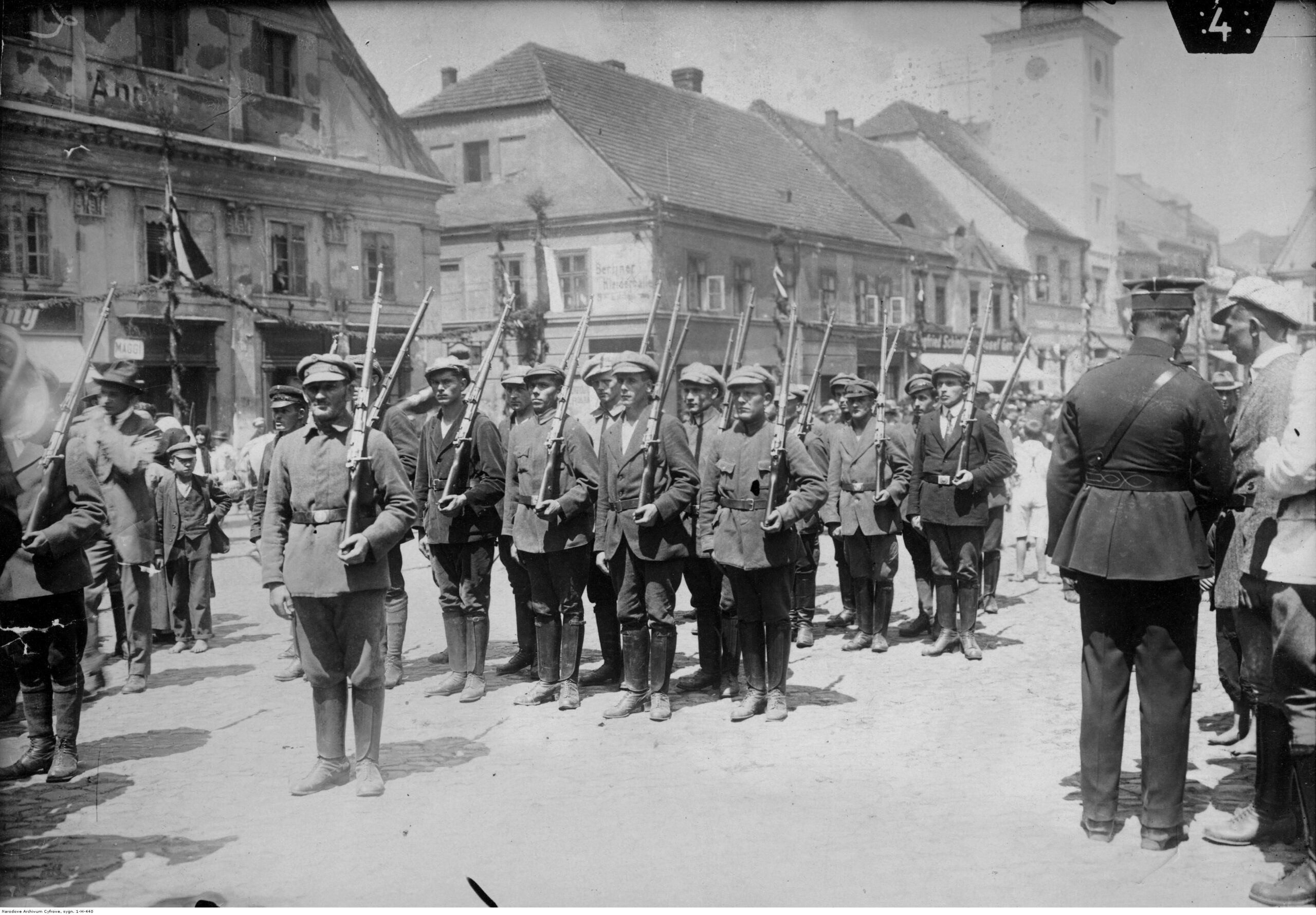On the night of 2-3 May 1921, the Third Silesian Uprising broke out. As a result of the two-month-long fighting, Poland was granted a much larger part of Upper Silesia and most of the area’s mines, steel mills and other industrial plants. In the summer of 1922, units of the Polish Army entered the territory that they had been assigned.
by Michał Szukała
After the defeat of the first uprising in August 1919, Allied troops arrived in Silesia and effectively limited the scale of German terror against Poles and the organizations they created. In October 1919, regular German troops were withdrawn from Silesia. Another groundbreaking uprising, which broke out in August 1920, was formed as the response of Polish military and plebiscite organizations to anti-Polish German actions before the plebiscite that was to be soon held there. On 24 August, as a result of the fighting, the Inter-Allied Plebiscite Commission announced the dissolution of the German police and established the Upper Silesia Police with a Polish-German staff. The insurgents also obtained assurances that the leaders of anti-Polish riots would be punished and that those who had arrived after 1 August 1919 would be removed from the area covered by the plebiscite. Thus, Poles gained the opportunity to conduct agitation and patriotic activities that strengthened the aspirations of local communities to return to Poland. Wojciech Korfanty and other national activists and commanders of the Polish Military Organization knew that the plebiscite did not have to mean the final settlement of the future of Upper Silesia.
The plebiscite fight
In February 1920, the Polish Plebiscite Commissariat was established. It was headed by Wojciech Korfanty by the decision of the Chief of State, Józef Piłsudski. The “Lomnitz” hotel in Bytom became the seat of the Commissariat. At the same time, committees supporting its efforts were established in all cities within the area of the plebiscite. Funds collected for the plebiscite campaigns were organized all over Poland. The miners from one of the mines in Zagłębie Dąbrowskie donated a daily wage earned by the crew to help their neighbors. The underground Polish Military Organization, first acting as the Headquarters of Physical Education, and then as the Command for the Protection of the Plebiscite, also played a great role. In May 1920, school students joined in suppoof ingredients the Polish postulates. The outbreak of the Second Silesian Uprising took place at the time of the heightened German terror carried out by militias. After its end, the tension in Upper Silesia eased somewhat. The plebiscite commissioners issued a joint proclamation calling for peaceful preparation for the vote.
The voting took place on 20 March 1921. People who had previously emigrated from Silesia were admitted to it. For this purpose, 182000 immigrants came from Germany, and 10000 from Poland. Ultimately, approx. 97 percent of eligible persons took part in the plebiscite of which nearly 19 percent were former emigrants. A minority voted to join Poland – 40.3 percent of voters.
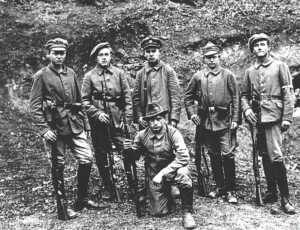
The Plebiscite Committee decided to allocate almost the entire area to Germany – Poland was to receive only the Pszczyna and Rybnik districts. Following this news, the single strikes of people dissatisfied with the difficult material conditions and unemployment of the region’s inhabitants turned into a general strike on 2 May that covered 97% of the workplaces.
The only hope for Polish public opinion was the provision of the Versailles Treaty, which stated that the results of the plebiscite were not binding, and needed to be approved by the allied powers. Their opinions were divided. Great Britain and Italy believed that almost all of Upper Silesia must be granted to Germany because its economic structure did not allow for division. A similar view was unofficially expressed by the United States. Consequently, France was on the side of Polish interests, striving to weaken Germany as much as possible by assigning Poland all the districts in which the majority of residents had opted for belonging to Poland. The chances of a positive outcome for Poland seemed to be relatively small.
“We will achieve victory at any cost”
As early as March 1921, steps were taken on the Polish side to strengthen the garrisons along the border with Upper Silesia and to transfer weapons to Upper Silesia. The border was also secretly crossed by a telegraph company that was supposed to organize communication in the event of another outbreak of unrest. In response, the Germans expanded the Selbstschutz. Actions against it were taken by the French army, which managed to disarm some of the conspiratorial units. Intelligence played an important role for both sides. It was the information obtained that accelerated the decision to start fighting. On the night of 29-30 April, the Polish command learned that Poland’s position in the Inter-Allied Plebiscite Committee was getting weaker.
In the last days of April, another wave of strikes was spreading in Upper Silesia and social tension was growing. Taking into account the possibility of a spontaneous outbreak of fights and the disturbing information from the Inter-Allied Plebiscite Commission, Wojciech Korfanty decided to convene a conference of Polish political and military leaders in Bytom. A decision was made to start the uprising. According to some historians, the chairman of the Inter-Allied Ruling and Plebiscite Commission in Upper Silesia, General Henri Le Rond, decided to support the Poles. The beginning of the uprising was preceded by the publication in the press of information about German plans to destroy industrial plants that were assigned to Poland.
The beginning of the Third Silesian Uprising
On 2 May, a general strike of Polish miners and workers began. On the same day, the commander of the POW Lt. Col. Maciej Mielżyński, under the pseudonym Nowina-Doliwa, handed over to Warsaw the decision to start the uprising. The first reaction of the capital was negative. However, it was quickly agreed that on the international forum the government of the Republic of Poland would present insurgent activities as an armed demonstration in defense of Polish interests. The goals of the fight defined by Mielżyński were slightly different: “to destroy, wherever possible, German military organizations, to take as much of Upper Silesia as possible […], to prove to the whole world that Silesia, which was oppressed by the Prussian yoke for hundreds of years, is Polish and wants to belong to the Republic of Poland.”
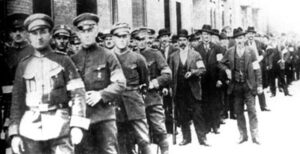
On the night of 2-3 May, the uprising began. It was headed by Korfanty, who also proclaimed himself its dictator. “We will achieve victory at any cost, and there is no such strongman in the world who would be able to restrain us in German chains,” he wrote on 3 May in an appeal to his countrymen. Władysław Sikorski: “The armed movement is considered a desperate necessity both by Commissioner Korfanty and by me. About its possible success I can say this: people are under great tension, ready for anything, they morally outweigh the Germans, although they are materially weaker.” In his opinion, it was impossible to postpone the fight any further, because “it would completely demoralize my organization, whose zeal and courage is the first condition for victory.”
There were 40,000 POW members armed with only 38 000 rifles, 540 machine guns and 70,000 grenades. The ammunition could be enough for two or three days of fighting. The forces of German militias numbered around 30,000 people. Nearly 16,000 soldiers and policemen waited on the border of the plebiscite area.
Góra św. Anny
The uprising began with the takeover of the telephone and telegraph network. Sapper troops blew up most of the bridges on the border of Upper Silesia and Germany. Many soldiers taking part in this action did not manage to reach the remaining insurgent forces and died in the fighting or were murdered by the Germans. Their effort, however, turned out to be invaluable for the fate of the uprising, as it allowed the continuation of the large-scale offensive until 10 May and the achievement of the so-called the Korfanty line, i.e. the line postulated by the leader of the future state border. The great cities of the region were also temporarily seized, but later the insurgents were pushed out of them.
The strategically important region of Góra św. Anny
On 10 May, representatives of the Allied states demanded in Warsaw that the government give an order to stop the fighting. The government of Wincenty Witos officially banned any support for the insurgent forces, but in fact they turned a blind eye to the crossing of the border with Upper Silesia by volunteers from all regions of Poland. At the same time, France threatened Germany that in the event of an intervention by regular German forces, French troops would occupy the western regions of Germany. Poles also enjoyed the “benevolent neutrality” of the Allied troops occupying Upper Silesia. British and Italian troops were definitely hostile. The attitude of the former was “commemorated” in one of the insurgents’ songs: “O honor to you cheaters from London, For streams of Silesian blood shed, We wield a rifle, do not fear the deed, we shall liberate beloved Silesia.”
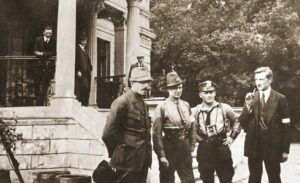
Moods unfavorable to Korfanty
In the second half of May, the ratio of forces began to change to the disadvantage of Poles. Reinforcements of Freikorps soldiers, commanded by professional officers experienced in the First World War, were arriving from the depths of Germany. On the night of 20-21 May, the German counter-offensive began. The next day, the Germans regained Góra św. Anny. The fights in its vicinity continued for five more days.Many times Poles fought off German attacks with great dedication, including with the support of armored trains. Many towns changed hands several times. The insurgents also tried to retake the vicinity of Góra św. Anny. Soon the Germans attacked even quicker because of the threat of the arrival of more Allied forces. By that time, the Germans had advanced nearly 40 km towards the most important centers of Upper Silesia. They paid for their success with the loss of approximately 2000 killed and wounded. However, the situation of Poles was becoming more and more difficult due to the depletion of ammunition. At the beginning of June, commanders began opposing Korfanty. Some even called for the proclamation of the sovereign state of Upper Silesia.
In mid-June, the Allied forces occupied other towns. In this way, the forces of the fighting parties were effectively distributed. On 16 June, the Polish command issued an order announcing the cessation of operations. “Insurgents! The Uprising achieved its closest goal. Today there is no German representative of any authority, even dependent on the Allies, in the part of Upper Silesia you conquered. The Polish people of Upper Silesia have set foot on their land as its owner. The borders of the area you conquered are secured by the Allied forces. German troops withdrew from our front outside the plebiscite area under the control of the coalition authorities. […] Soon the coalition will make a decision regarding our country. You have proved to them that Upper Silesia is Polish”. At the same time, an appeal to the Poles was issued by the authorities of the uprising: “Our suffering will end soon and Polish Silesia, liberated from the German yoke, will be able to work on its own development and for the great good of the now united Motherland.”
About 60,000 Poles took part in the Third Silesian Uprising. Nearly 2000 were killed or injured.
The success of the Third Silesian Uprising
After the end of the fighting, the authority over the entire plebiscite area was taken over by the Inter-Allied Commission. The Germans still demanded to be granted the entire area of Upper Silesia. The uprising led to a situation in which this postulate was completely detached from the political reality. A small group of German politicians believed that the “compromise” solution would be the creation of an independent Upper Silesian state. This scenario was also supported by Czechoslovakia, which was reluctant to cede this victory to Poland. Poland was in favor of dividing this area according to an ethnic criterion.
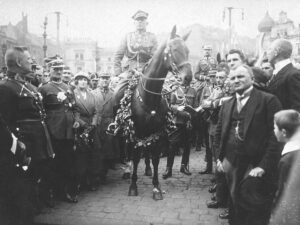
In October 1921, the Council of Ambassadors and the Council of the League of Nations decided on the division of Silesia, which was more favorable for Poland. From the plebiscite area, i.e. over 11,000 km² inhabited by over 2000000 people, 29 % of the land and 46 % of the population were included in Poland. The most important cities in the region were included in Poland, including Katowice, Świętochłowice, Królewska Huta (today’s Chorzów), Rybnik, Lubliniec, Tarnowskie Góry and Pszczyna. The division was also economically advantageous – 53 out of 67 existing mines, 22 out of 37 blast furnaces and 9 out of 14 steel plants were located in the area. Thus, Upper Silesia became the most important industrial center of the reborn state. The process of economic integration of Upper Silesia was one of the greatest economic challenges of the Second Polish Republic. One of the most important undertakings supporting the economy of Silesia was the construction of a coal mainline to Gdynia.
The Act of Taking Upper Silesia
In May 1922, the parties began negotiations on taking control of Upper Silesia from the hands of the Allies. On 20 June, units commanded by General Stanisław Szeptycki crossed the existing border and marched to Katowice, which became the capital of the Silesian region. The process of taking control over the granted area symbolically ended on 16 July 1922, when a document commemorating this moment was signed in Katowice (the Act of Taking over Upper Silesia).
The results of the fight for Silesia were welcomed by the majority of society. At rallies to celebrate the victory, resolutions were passed, in which it was assured that the rest of Upper Silesia would also return to Poland. “Thanks to the miracle on the Vistula saved Poland from destruction, the miracle on the Oder Poland gained Silesia. The miracle on the Vistula and the miracle on the Oder have not been created by any dictator, by any mighty man who took responsibility for the fate of the nation, but by the spirit of the nation, its national solidarity, civic spirit and the sense of responsibility of each citizen,”assessed Wojciech Korfanty.
Author: Michał Szukała (PAP)
Translation: Mikołaj Sekrecki

